
Working Scientist
Nature Careers
Science & Nature Careers Podcast, Audio Job Advice & Tips
- 29 minutes 9 secondsHow to be a brilliant ally to your neurodivergent lab mate
Charlotte Roughton says she developed a deep-rooted shame and resentment towards her autism diagnosis, causing her to mask the condition during her biosciences degree at the University of Durham, UK.
But socially camouflaging and striving to appear as neurotypical to others led to burnout and poor mental health, she tells Adam Levy.
The COVID-19 pandemic, which straddled her Masters and PhD programmes, was a turning point. She cultivated a community via social media, becoming an advocate for neurodiversity in STEM (science, technology, engineering and mathematics).
Being neurodivergent brings benefits to her role as a biological teaching technician at the University of Newcastle, UK, she says. She offers advice and how and when to disclose an autism diagnosis at work, based on her own experience, and how institutions and lab mates can support neurodivergent colleagues.
Endocrinology researcher Michelle Kimple tells a similar story, recounting the relief she felt on receiving a bipolar and attention deficit hyperactivity disorder (ADHD) diagnosis.
She describes how this impacts her role as a faculty member in the department of medicine at the University of Wisconsin Madison.
In 2024 Kimple wrote about her experiences in Nature, prompting other neurodiverse scientists to get in touch, and enabling her to mentor and support others.
Hosted on Acast. See acast.com/privacy for more information.
17 January 2025, 2:58 pm - 19 minutes 31 secondsMind matters: investigating academia’s ‘mental health crisis’
Why do so many academics struggle to ‘power down’ at the end of a long working day, and what are the longer-term health effects of failing to switch off at evenings and weekends?
Desiree Dickerson is a clinical psychologist based in Valencia, Spain, who works with academic institutions to develop healthier and more sustainable approaches to research. She joins Simone Lackner to discuss why poor mental health is often so prevalent in academia, and often described as reaching crisis proportions.
Lackner is a multidisciplinary researcher and ambassador for the Researcher Mental Health Observatory (REmO), an international network focussed on wellbeing and mental health within academia. In 2022 she founded The Empathic Scientist, a consultancy which focuses on wellbeing and inclusion in academia.
This episode is the first of an eight-part series on mental health and wellbeing in academia. Over the next few weeks Adam Levy will be speaking with a wide range of people who share their own experiences and expertise, including potential solutions to a longstanding problem.
Hosted on Acast. See acast.com/privacy for more information.
10 January 2025, 3:53 pm - 39 minutes 4 secondsFour weddings, a funeral, and the Sustainable Development Goal logos
Graphic designer Jakob Trollbäck remembers a 2014 meeting with film director Richard Curtis and the United Nations Sustainable Development Goals, then very much a work in progress, coming up in conversation.
Curtis, whose movies include Four Weddings and a Funeral, Notting Hill, Love Actually and the Bridget Jones series, is also a UN Advocate for the SDGs. The meeting in Trollbäck’s New York studio suddenly turned to the 17 goals, with Curtis telling him: “I think this may be our last shot of fixing a lot of the things that’s wrong with the planet. And I also think that these goals are going to fail if we can't make them popular. Do you want to help me?”
Trollbäck, founder of The New Division agency, rose to the challenge. Over the course of a year, alongside designer colleague Christina Rüegg-Grässli, he designed the now famous multi-colour palette, individual icons and logo of the SDGs.
Their design had to tick three boxes: be accessible, universal and positive. The interconnectedness of the goals leant itself to the overall circular logo type, and the bright colours were key to making the framework interesting and likeable.
Some icons were almost instantaneous in their creation — such as the fish that represents SDG 14: Life Below Water — while others needed collaboration with the UN communications team colleagues to get right.
For example, Trollbäck remembers SDG 2: Zero Hunger; the initial design had a fork in it, until someone pointed out that two thirds of the of the world’s population don't use forks.
The World Economic Forum say 74% of the adults globally are aware of the SDGs.
This is the final episode of How to Save Humanity in 17 Goals, a Working Scientist podcast series that profiles scientists whose work addresses one or more of the SDGs. Episodes 13–18 are produced in partnership with Nature Sustainability, and introduced by Monica Contestabile, its chief editor.
Hosted on Acast. See acast.com/privacy for more information.
17 October 2024, 4:30 pm - 35 minutes 33 secondsA checklist for delivering the Sustainable Development Goals
When Vinnova, Sweden’s innovation agency, sought to change the country’s food systems in 2020, it started by looking at school meals and funding several projects around menus, procurement, and how cafeterias were organised.
Breaking down a big goal into smaller component parts and bringing together different interested parties, as Vinnova did, is key to delivering the United Nations’ Sustainable Development Goals (SDGs), says Kate Roll, a political scientist based at the Institute for Innovation and Public Purpose at University College, London.
Roll’s particular focus is the last of the 17 SDGs with its focus on strengthening the means of implementation. Roll calls it an “enabling SDG,” its success ultimately measured when the other 16 “big, wooly, hairy SDG goals,” as she terms them, are achieved. These straddle poverty, hunger, education, gender equity, clean water and energy, among others.
Roll explains that one approach to tackling SDG 13’s climate change targets, for example, might be to aim for 100 carbon-neutral cities in Europe by 2030, approaching it from both a transport and energy perspective, but also the built environment, real estate, and people’s behaviour, and bringing together relevant stakeholders, as Vinnova did for its food systems goal.
This is the penultimate episode of How to Save Humanity in 17 Goals, a Working Scientist podcast series that profiles scientists whose work addresses one or more of the SDGs. Episodes 13–18 are produced in partnership with Nature Sustainability, and introduced by Monica Contestabile, its chief editor.
Hosted on Acast. See acast.com/privacy for more information.
10 October 2024, 11:15 am - 30 minutes 44 secondsHow artificial intelligence can help to keep us safe
Growing up in the last years of the Cold War motivated Gabriele Jacobs to enter academia and play her part in building peaceful societies.
Jacobs works at Erasmus University Rotterdam in the Netherlands, where she researches the role artificial intelligence (AI) can play in public safety and the ethical debate surrounding this.
She describes how experiments are being conducted on beaches in the Netherlands to see if AI can be used to predict human behaviour. These experiments also test the ethical, legal and social implications of this use of AI, and question who has the power to choose the definitions used in the algorithms.
Jacobs’ work addresses Sustainable Development Goal Number 16: to promote peaceful and inclusive societies and justice for all.
This is episode 16 of How to Save Humanity in 17 Goals, a Working Scientist series podcast that profiles scientists whose work addresses one or more of the SDGs. Episodes 13–18 are produced in partnership with Nature Sustainability, and introduced by Monica Contestabile, its chief editor.
Hosted on Acast. See acast.com/privacy for more information.
3 October 2024, 11:00 am - 25 minutes 19 secondsMy mission to protect threatened mangroves
Sigit Sasmito describes how his research at James Cook University in Brisbane, Australia, is helping to protect both peatlands and mangroves across southeast Asia, as part of a drive to meet Sustainable Development Goal 15.
The goal, one of 17 agreed by the United Nations in 2015. aims to protect, restore and promote sustainable use of terrestrial ecosystems. This includes sustainable forest management, combating desertification, and halting biodiversity loss.
Indonesia, where Samito grew up, aims to restore 1.2 million hectare of peatlands and 600,000 hectares of mangroves, he tells How to Save Humanity in 17 Goals podcast series. Ultimately these efforts must involve local communities and needs to deliver benefits for them, he says.
Hosted on Acast. See acast.com/privacy for more information.
26 September 2024, 4:48 pm - 31 minutes 12 secondsHow studying octopus nurseries can shape the future of our oceans
Watching documentaries about the Titanic inspired deep-sea microbiologist Beth Orcutt to study life at the bottom of the ocean - a world of ‘towering chimneys, weird shrimp and octopus nurseries’ that she has visited 35 times.
But Orcutt says there is so much we still don't know about the deep sea, which is a problem for the sustainable development of this environment. Orcutt works at Bigelow Laboratory for Ocean Sciences in Boothbay, Maine, where her research helps to understand how deep-sea mining might impact unique ocean communities.
Research on similarly destructive activities, such as deep-sea trawling, show decades-long recovery times for keystone species such as corals and sponges, or in some cases no recovery at all.
Orcutt works through the Crustal Ocean Biosphere Research Accelerator (COBRA) project funded by the US National Science Foundation to bring academics, policymakers and science communicators together to accelerate research about the deep sea and translate that knowledge for decision makers.
This is episode 14 of How to Save Humanity in 17 Goals, a Working Scientist series podcast that profiles scientists whose work addresses one or more of the SDGs. Orcutt's work addresses Sustainable Development Goal number 14: to conserve and sustainably use the oceans, seas and marine sources.
Episodes 13–18 are produced in partnership with Nature Sustainability, and introduced by Monica Contestabile, its chief editor.
This episode ends with a sponsored slot from La Trobe Institute for Sustainable Agriculture and Food in Melbourne, Australia, where we hear about how its researchers are focusing on the SDGs and the university’s holistic approach to food security.
Hosted on Acast. See acast.com/privacy for more information.
19 September 2024, 11:10 am - 24 minutes 9 secondsHow we slashed our lab’s carbon footprint
Analytical chemist Jane Kilcoyne was working in her biotoxin monitoring lab one day in 2018 when she noticed a bin overflowing with plastic waste. The observation prompted her to join forces with like-minded colleagues and develop a package of measures aimed at reducing their lab’s carbon footprint. Their efforts include reducing energy consumption, composting shellfish waste, polystyrene recycling, and digitizing documentation.
Labs are estimated to use 10 times more energy and five times more water than office spaces, she says, and the average bench scientist uses around 10 times more single-use plastics than the average person.
Kilcoyne, who works at the Marine Institute, a government agency responsible for marine research, in Galway, Ireland, describes how their efforts feed into the thirteenth of 17 Sustainable Development Goals set by the United Nations in 2015 (to take urgent action to combat climate change and its impacts).
How to Save Humanity in 17 Goals is a podcast series that profiles scientists whose work addresses one or more of the SDGs. Episodes 13–18 are produced in partnership with Nature Sustainability, and introduced by Monica Contestabile, its chief editor.
Hosted on Acast. See acast.com/privacy for more information.
12 September 2024, 8:38 am - 19 minutes 18 secondsMeet the retired scientists who collaborate with younger colleagues
In the sixth and final episode of The Last few miles: planning for the late stage career in science, Julie Gould unpicks some of the generational tensions that can arise in academia when a colleague approaches retirement.
Inger Mewburn, who leads research and development training at the Australian National University in Canberra, tells her: “There’s a fine line between being around and being valued, to being around and kind of being a pain in the ass and no one will tell you to go away.”
Gould also talks to scientists who, despite reaching retirement age, continue to engage with younger colleagues, enjoying positive interactions at conferences and co-authoring papers.
They include Heather Middleton, who started trawling England’s Jurassic Coast in her 60s, looking for specimens that might lead to a deeper understanding of palaeontology. Middleton, who is approaching her 80th birthday, taught science in schools and colleges, and in retirement balances her fossil-hunting, (and the collaboration opportunities it brings), with family holidays, grandchildren, friends and Tai Chi. "It’s a great balance, which I hope other retiring scientists will be able to enjoy such opportunities that I’ve had," she says.
Hosted on Acast. See acast.com/privacy for more information.
26 July 2024, 2:28 pm - 23 minutes 2 secondsA dumpster full of mercury and other things to avoid: lab closures made simple
In the fifth episode of this six-part podcast series about the late career stage, physicist María Teresa Dova outlines how she is preparing colleagues years in advance to ensure a smooth handover of her lab at the University of La Plata, in Argentina.
But in the United States, when the principal investigator leaves it is likely the lab itself will close down, Gould discovers. For microbiologist Roberto Kolter, emeritus professor at Harvard Medical School in Boston, Massachusetts, this meant gradually downsizing his team before retirement, so all members had a clear timeframe in which to finish their work.
Often what happens to the contents of a lab is decided by the institution. Equipment such as freezers are often given to other research groups, while unique resources — such as Kolter’s 10,000 strong collection of bacterial strains created from his years of research — are kept and managed by the institution.
Chemist Craig Merlic, executive director of the University of California Center for Laboratory Safety in Los Angeles, stresses that it is important to think about the fate of hazardous lab materials to prevent future accidents.
Sometimes there isn’t time to plan, as experienced by immunologist Carol Shoshkes Reiss at New York University, when she had to suddenly close her lab due to a lack of funds. Shoshkes Reiss shares the surprising feeling she experienced after this abrupt closure — relief.
Hosted on Acast. See acast.com/privacy for more information.
22 July 2024, 3:37 pm - 23 minutes 5 secondsPension planning and psychosocial support: how institutions can help academics at the late career stage
The list of things to organize as retirement from academia approaches can feel daunting. In the fourth episode of The last few miles, a six-part podcast series about the late career stage in science, researchers talk about health, housing and financial planning.
Carol Shoshkes Reiss, an immunologist at New York University, explains how her institution assigns individual wealth managers to advise on retirement investments and budgeting.
Inger Mewburn, who leads researcher training at the Australian National University in Canberra, chose a private accountant to manage her finances, who probes not only her approach to risk around investments, but also potential retirement dates and her income expectations.
Entomologist Matan Shelomi, associate professor at the National Taiwan University in Taipei and originally a citizen of the United States, describes how he has had to amend his retirement plans as an expat academic.
Gerontologist Stacey Gordon works with Shoshkes Reiss at New York University as part of a personalised program to support individuals with the mental and social aspects of their retirement, helping colleagues to find purpose and meaning in retirement.
Hosted on Acast. See acast.com/privacy for more information.
12 July 2024, 2:40 pm - More Episodes? Get the App
Your feedback is valuable to us. Should you encounter any bugs, glitches, lack of functionality or other problems, please email us on [email protected] or join Moon.FM Telegram Group where you can talk directly to the dev team who are happy to answer any queries.
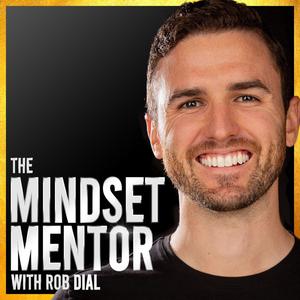 The Mindset Mentor
The Mindset Mentor
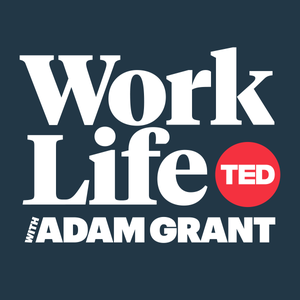 WorkLife with Adam Grant
WorkLife with Adam Grant
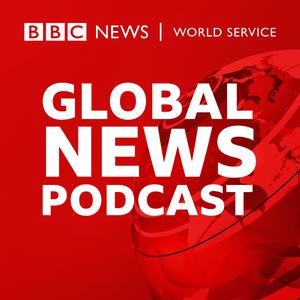 Global News Podcast
Global News Podcast
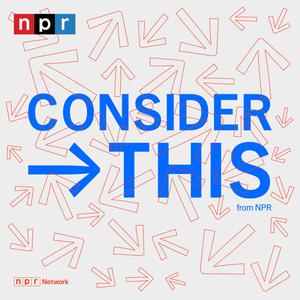 Consider This from NPR
Consider This from NPR
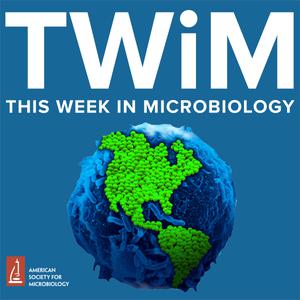 This Week in Microbiology
This Week in Microbiology
 Nature Podcast
Nature Podcast